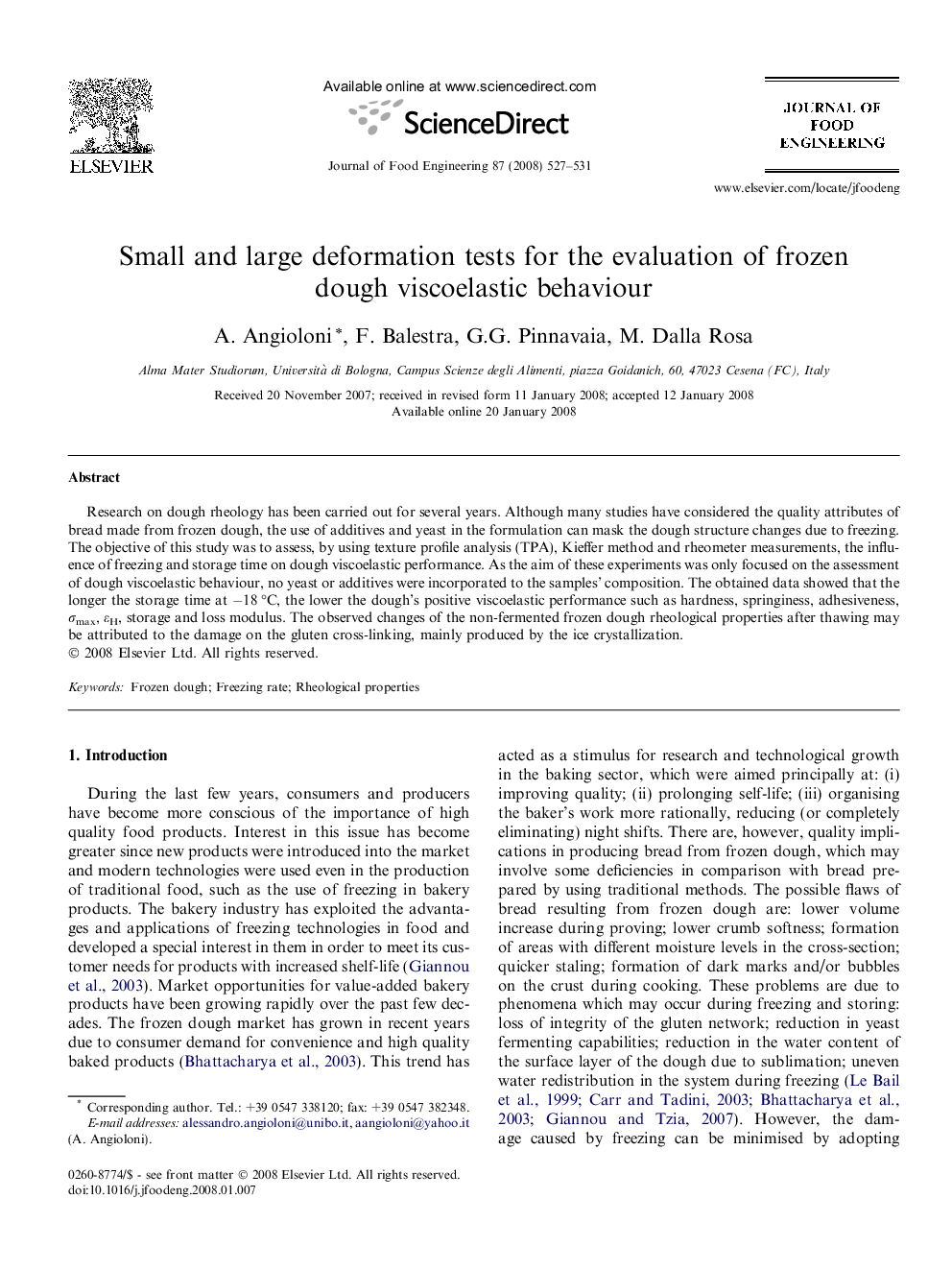| Article ID | Journal | Published Year | Pages | File Type |
|---|---|---|---|---|
| 225259 | Journal of Food Engineering | 2008 | 5 Pages |
Research on dough rheology has been carried out for several years. Although many studies have considered the quality attributes of bread made from frozen dough, the use of additives and yeast in the formulation can mask the dough structure changes due to freezing. The objective of this study was to assess, by using texture profile analysis (TPA), Kieffer method and rheometer measurements, the influence of freezing and storage time on dough viscoelastic performance. As the aim of these experiments was only focused on the assessment of dough viscoelastic behaviour, no yeast or additives were incorporated to the samples’ composition. The obtained data showed that the longer the storage time at −18 °C, the lower the dough’s positive viscoelastic performance such as hardness, springiness, adhesiveness, σmax, εH, storage and loss modulus. The observed changes of the non-fermented frozen dough rheological properties after thawing may be attributed to the damage on the gluten cross-linking, mainly produced by the ice crystallization.
